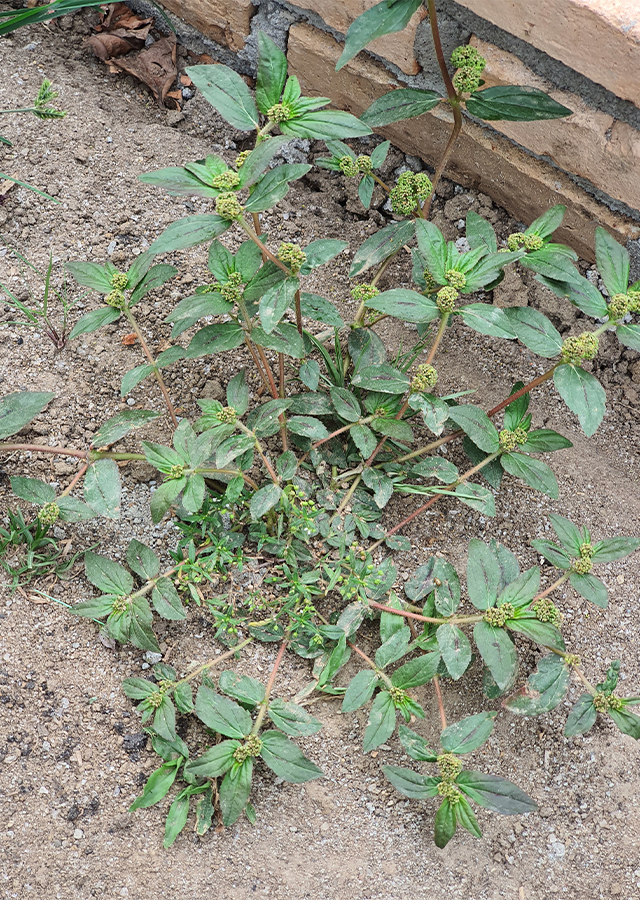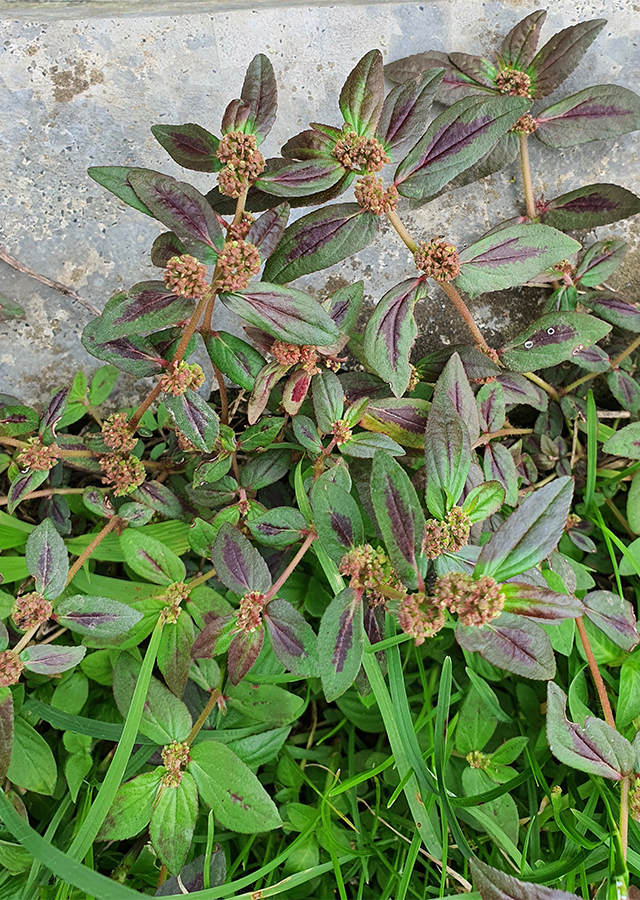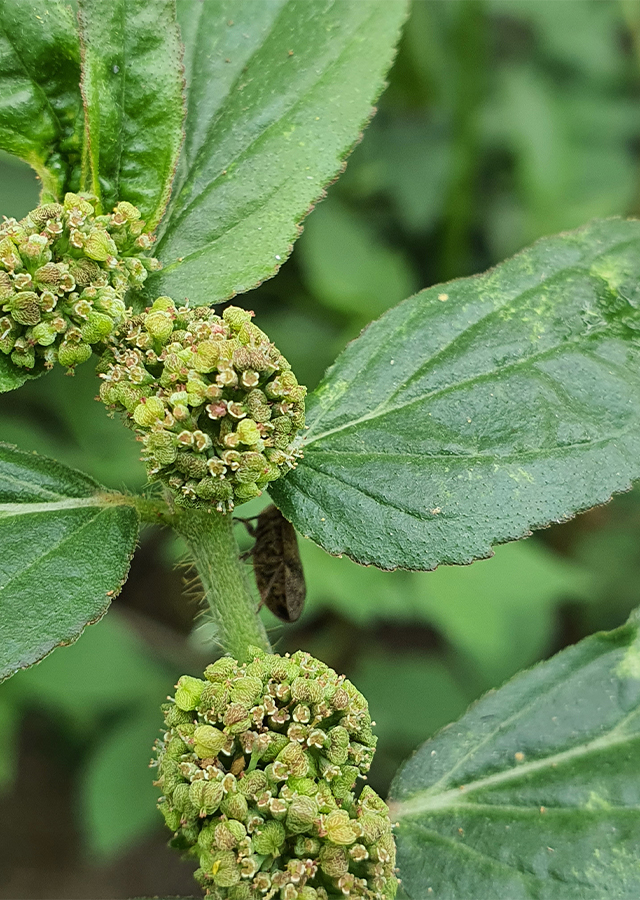Asthma-plant
Euphorbia hirta L.
Euphorbiaceae
Location in our garden
Principal



Synonym
Chamaesyce gemella (Lag.) Small
Chamaesyce hirta (L.) Millsp.
Chamaesyce hirta var. laeticincta Croizat
Habitus
Herbaceous. A slender-stemmed, annual hairy plant growing up to 40 cm tall.
Part Used
Leaves
Latex
The Whole Plant
Growing Requirements
Full Sunshine
Habitat
Roadside
Grassland
Overview
Asthma weed is native to India and Australia and is now widespread throughoutthe tropics. It is gathered from the wild for medicinal uses, but is also considereda weed. It is the most common and ubiquitous of the Euphorbiaceae family.
Vernacular Names
Ara tanah (Malaysia), Bara Dhudi (India), Shima-nishikiso (Japan), Fei yang cao (China), Euphorbe indienne (French), Indisches Wolfsmilchkraut (German), Nam nom raaychasee (Thailand), Gatas-gatas (Phillipines).
Agroecology
E. hirta is a very common weed of the tropics and subtropics. It prefers a light well-drained moderately rich loam in an open sunny position. The plant is not very tolerant offrost, though it can probably be grown successfully. It occurs in moist open places at elevations up to 1,800 m.
Morphology
- Root - a central tap root.
- Stem - hispid with long, yellowish, crispedhair, sparingly branched above the base,branches ascending, often quadrangular,unbranched at the tip, pilose.
- Leaves -elliptic-oblong, 2–3 cm by 0.8–1.5cm, opposite, shortly stalked, acute,dentate or serrulate, dark green above,pale beneath, base obliquely cordate,nerves few, distinct, stipules pectinate.
- Flowers - grouped in small inflorescence, inaxillary dense clusters, each with one female flower and 4–5 male flowers inside.
- Fruit - in a capsule, minute, 1 mm across, globose-trigonous, shortly strigose, patently hairy, pale reddish.
- Seeds - small, 0.6 x 0.2 mm, oblong, tetragonal,reddish, acute at one end with shallow transversefurrows or wrinkles.
Cultivation
- Propagated by seeds.
- Optimum germination temperature is 15-40°C.
- It requires light for germination and will not germinate if buried below the soil surface.
Chemical Constituents
Flavonoids, terpenoids, alkanes, phenolic acids,shikimic acid, choline, euphorbon, euphosterol,camphol, leucocyanidol, xanthorhamnin,taraxerol, taraxerone, myricitrin, euphorbianin.
Traditional Medicinal Uses
- Analgesic, Antibacterial, Anti- diarrhoeal, Anti-inflammatory, Antiplatelet, Antiprotozoal, Antipyretic, Anxiolytic, Diuretic, Sedative,Antianaphylactic,
- The whole plant is decocted for athlete’s foot, dysentery, enteritis,fever, gas, itch, and skin conditions.
- It is regarded as anodyne, depurative, diuretic, lactogogue, purgative,and vermifuge.
- The plant is used for asthma, bronchitis, calculus, colic, cough,dyspnea eruptions, excrescences, influenza, fractures, gonorrhoea,headache, hyper- tension, measles, nausea, ophthalmia, sores,splinters, stomachache, tumours, urogenital ailments, warts andwounds.
- In Central Province of Papua New Guinea, the plant is boiled and thesolution is taken by patients who pass blood in the urine.
- In China the plant is used to treat fever, dysentery and skin conditions.
- In the Philippines and Indonesia, the plant is used to treat bowel problems. The latex is used on warts and abscesses.
- In the Anglo-American tradition, it is taken to treat intestinal amebiasis


